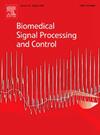LiteNeXt: A novel lightweight ConvMixer-based model with Self-embedding Representation Parallel for medical image segmentation
IF 4.9
2区 医学
Q1 ENGINEERING, BIOMEDICAL
引用次数: 0
Abstract
The emergence of deep learning techniques has advanced the image segmentation task, especially for medical images. Many neural network models have been introduced in the last decade bringing the automated segmentation accuracy close to manual segmentation. However, cutting-edge models like Transformer-based architectures rely on large scale annotated training data, and are generally designed with densely consecutive layers in the encoder, decoder, and skip connections resulting in large number of parameters. Additionally, for better performance, they often be pretrained on a larger data, thus requiring large memory size and increasing resource expenses. In this study, we propose a new lightweight but efficient model, namely LiteNeXt, based on convolutions and mixing modules with simplified decoder, for medical image segmentation. The model is trained from scratch with small amount of parameters (0.71M) and Giga Floating Point Operations Per Second (0.42). To handle boundary fuzzy as well as occlusion or clutter in objects especially in medical image regions, we propose the Marginal Weight Loss that can help effectively determine the marginal boundary between object and background. Additionally, the Self-embedding Representation Parallel technique is proposed as an innovative data augmentation strategy that utilizes the network architecture itself for self-learning augmentation, enhancing feature extraction robustness without external data. Experiments on public datasets including Data Science Bowls, GlaS, ISIC2018, PH2, Sunnybrook, and Lung X-ray data show promising results compared to other state-of-the-art CNN-based and Transformer-based architectures. Our code is released at: https://github.com/tranngocduvnvp/LiteNeXt.
LiteNeXt:一种新的轻量级的基于convmixer的自嵌入表示模型,用于医学图像分割
深度学习技术的出现推动了图像分割任务的发展,尤其是医学图像的分割。近十年来,许多神经网络模型被引入,使自动分割的精度接近人工分割。然而,像基于transformer的体系结构这样的前沿模型依赖于大规模带注释的训练数据,并且通常在编码器、解码器和跳过连接中使用密集的连续层设计,从而导致大量参数。此外,为了获得更好的性能,它们通常在更大的数据上进行预训练,因此需要更大的内存大小并增加资源开销。在这项研究中,我们提出了一种新的轻量级的高效模型,即LiteNeXt,基于卷积和混合模块以及简化的解码器,用于医学图像分割。该模型是用少量参数(0.71M)和每秒千兆浮点运算(0.42)从头开始训练的。为了处理物体边界模糊以及遮挡或杂波,特别是在医学图像区域,我们提出了边缘加权法,可以有效地确定物体与背景之间的边缘边界。此外,自嵌入表示并行技术作为一种创新的数据增强策略,利用网络结构本身进行自学习增强,增强了特征提取的鲁棒性,无需外部数据。与其他最先进的基于cnn和基于transformer的架构相比,在包括Data Science Bowls, GlaS, ISIC2018, PH2, Sunnybrook和Lung x射线数据在内的公共数据集上的实验显示出有希望的结果。我们的代码发布在:https://github.com/tranngocduvnvp/LiteNeXt。
本文章由计算机程序翻译,如有差异,请以英文原文为准。
求助全文
约1分钟内获得全文
求助全文
来源期刊

Biomedical Signal Processing and Control
工程技术-工程:生物医学
CiteScore
9.80
自引率
13.70%
发文量
822
审稿时长
4 months
期刊介绍:
Biomedical Signal Processing and Control aims to provide a cross-disciplinary international forum for the interchange of information on research in the measurement and analysis of signals and images in clinical medicine and the biological sciences. Emphasis is placed on contributions dealing with the practical, applications-led research on the use of methods and devices in clinical diagnosis, patient monitoring and management.
Biomedical Signal Processing and Control reflects the main areas in which these methods are being used and developed at the interface of both engineering and clinical science. The scope of the journal is defined to include relevant review papers, technical notes, short communications and letters. Tutorial papers and special issues will also be published.
 求助内容:
求助内容: 应助结果提醒方式:
应助结果提醒方式:


